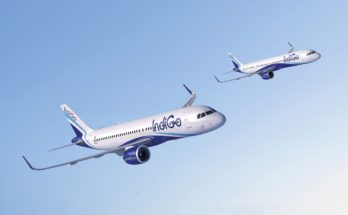Small satellites are playing an increasingly important role in the commercial market. Since 2013, new companies have introduced business models that use large fleets of small satellites to conduct Earth observation. Traditional remote sensing satellites like DigitalGlobe’s WorldView-4 can cost upward of $450 million each. On the other hand, small remote sensing satellites can be built and launched for under $1 million.
While the resolution of these smaller satellites is lower than that of their larger relatives, their low prices allow them to be deployed in large networks, increasing global coverage. The low price also allows companies to take more risks because the loss of a small satellite is not as financially devastating as the loss of a large, expensive satellite. Finally, the shorter lifespan of each satellite means companies can constantly upgrade their fleets with the latest technology.
Despite the promise and growing appeal of small satellites, the market continues to face a few challenges. While SmallSats are relatively cheap, a large network can still cost hundreds of millions of dollars to develop, build, and launch. Also, small satellites have shorter lifespans than larger ones, meaning they need to be replaced more often. Small satellite operators will need to make capital expenditures every year. Even though the loss of a few satellites is not devastating, a failure of a launch vehicle carrying a high number of SmallSats can disrupt a company’s plans. Planet experienced such hardship when it lost 34 satellites between two launch failures in 2014 and 2015. Finally, as SmallSats become more popular, competition for customers and investment is increasing.
Despite these challenges, the remote sensing SmallSat market continues to expand. Companies like Planet and Spire have begun deploying massive networks of satellites, while others like ICEYE and Astro Digital continue to raise funds from investors as they prepare to deploy their networks.
Various company officials say there is room for all the new players in the market. They indicate that the high number of satellite operators is a response to the needs of imagery customers, who have been starved for data for years. In addition, many satellite networks feature unique capabilities. For example, NorStar offers Earth imagery as well as space situational awareness data, Satellogic offers hyperspectral imagery, and Capella Space plans to offer synthetic aperture radar (SAR) data. Finally, because different satellite networks operate in slightly different orbits, they offer different angles for viewing objects of interest on Earth. Therefore, customers may purchase data from multiple companies to get different points of view.
Still, competition is intense. Even if capabilities or viewing angles are slightly unique, customers will need to select the best option for their budget. They may be unable or unwilling to spend money on multiple services. Also, small satellite operators will continue to compete with free imagery from government sources like LandSat and Copernicus and extremely high-resolution imagery from traditional satellite operators like DigitalGlobe. Companies that have the best technology, access to capital, and talent will succeed. At this point, it is difficult to determine which companies will succeed and which will fail; however, companies with first-mover advantage, such as Planet, have a leg up on the competition.
The overall market for commercial remote sensing SmallSats remains strong. Even if a few of the companies discussed in this report do not succeed, demand for Earth imagery from both commercial and government customers is robust. Furthermore, that demand will continue growing to meet the needs of mining and farming companies and others. Therefore, Forecast International currently expects the market for remote sensing satellites under 120 kilograms to continue its expansion through the late 2020s. By 2027, production will begin to level off. Some companies will exit the market, while others will establish themselves as market leaders. Few new entrants will be able to enter the market to compete with these established companies. Around that time, those leaders will begin to stabilize their replacement cycles.
Carter Palmer has long held a keen interest in military matters and aviation. As an analyst for Industrial & Marine Turbine Forecast, Carter specializes in examining key gas turbine programs for electrical power generation, mechanical drive, and marine propulsion applications. He is also responsible for updating the reports and analyses within the Space Systems Forecast – Launch Vehicles & Manned Platforms and Space Systems Forecast – Satellites & Spacecraft products.




